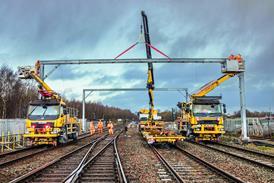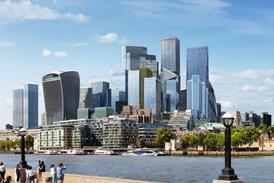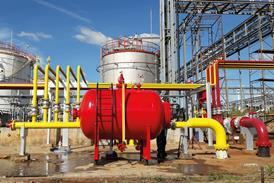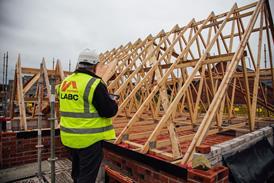Digging into the archives – Page 2
-
 Features
FeaturesFrom the archives: London’s first air raids, 1918
London wakes up to the threat of aerial bombing as total war grips the country, and the construction industry
-
 Features
FeaturesFrom the archives: The Great War drags on, 1915 - 1916
The Builder reports on mounting casualities as the war’s impact on Britain - and its construction industry - becomes clear
-
 Features
FeaturesFrom the archives: The First World War breaks out, 1914
The Builder’s coverage in the weeks following Britain’s declaration of war against Germany and Austria-Hungary
-
 Features
FeaturesFrom the archives: Building in Bombay, 1879-1892
Building reports from the port city now known as Mumbai as two of the British Raj’s largest ever colonial buildings are completed
-
 Features
FeaturesFrom the archives: Replacing Old Smithfield Market, 1864-68
The Builder reports as London rebuilds its 1,000-year-old meat market
-
 Features
FeaturesFrom the archives: Cleaning up the Great Stink, 1858
London’s sewer network collapses, creating a public health emergency as a cholera epidemic sweeps the capital. The Builder reports from the scene
-
 Features
FeaturesFrom the archives: An alternative proposal for Tower Bridge, 1878
Eminent engineer Joseph Bazalgette proposes a high level crossing reached by climbing a spiral shaped ramp
-
 Features
FeaturesFrom the archives: Cologne Cathedral’s topping out ceremony, 1880
Cologne Cathedral, completed in 1800, still has the largest facade of any church in the world
-
 Features
FeaturesFrom the archives: Britain’s dim view of the Eiffel Tower, 1886-89
Writers in The Builder express complete disdain for the newly built Parisian landmark, describing it as a ”useless attempt to astonish the eye”
-
 Features
FeaturesFrom the archives: Nelson’s Column runs out of money, 1843-44
The cash-strapped project to build the war hero’s memorial is set upon by hammer-wielding members of the public and receives an embarrassing donation from the Emperor of Russia
-
 Features
FeaturesFrom the archives: The Tay Bridge disaster, 1879
News item on the death of engineer Sir Thomas Bouch, who designed the bridge which collapsed in a storm killing 75 people
-
 Features
FeaturesFrom the archives: The construction of the Forth Bridge, 1873 - 1890
The Builder makes an ascent up the “vast bones” of the half built bridge, the scale of which astonished the engineering world at the time
-
 Features
FeaturesFrom the archives: Dodging falling bricks at the Natural History Museum construction site, 1876
An account of what visitors found when being shown round the half-completed building by its architect Alfred Waterhouse
-
 Features
FeaturesFrom the archives: First proposals for the Glasgow Subway, 1887
Building flags the risk of trains colliding in the Glasgow Subway’s narrow tunnels
-
 Features
FeaturesFrom the archives: The opening of Clifton Suspension Bridge, 1864
The Builder reports on the opening of Brunel’s historic bridge, which was finally completed more than a century after plans were first laid.
-
 Features
FeaturesFrom the archives: The clearance of London’s worst slum, 1843 - 1846
Letters and news items chart the construction of a new road through the centre of the notorious St Giles slum, the “haunt of the drunkard and the debauchee”
-
 Features
FeaturesFrom the archives: Alternative designs for Manchester Town Hall, 1868
Excitement builds as Manchester prepares to announce the winner of the competition to design its new council headquarters
-
 Features
FeaturesFrom the archives: The demolition of Northumberland House, 1874
An architecture-loving letter writer mourns the imminent loss of one of London’s last surviving Jacobean mansions
-
 Features
FeaturesFrom the archives: Setbacks on the world’s first underground railway, 1860
A deadly boiler explosion, half-built tunnels flooded by sewage and an “interminable tangle of timber”: here’s how we reported on the first part of the London Tube network
-
 Features
FeaturesFrom the archives: The Crystal Palace’s leaking roof, 1851
“Within all was bustle”… the third of our archive pieces celebrating Building’s 180th anniversary is an eye witness account of the chaotic scene at the Crystal Palace construction site as workers rush to get the building finished just weeks before the opening of the Great Exhibition



















